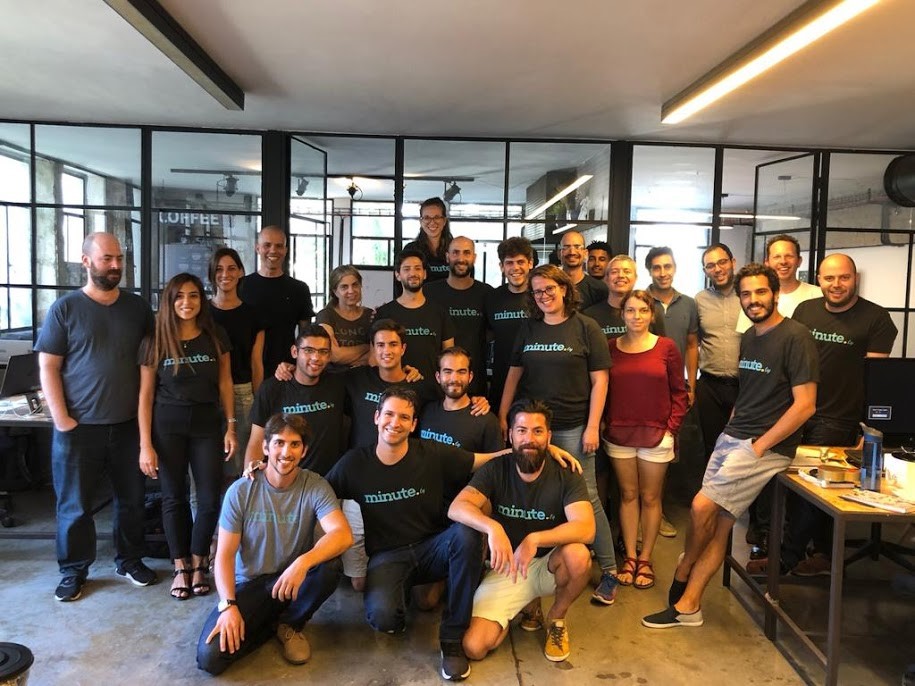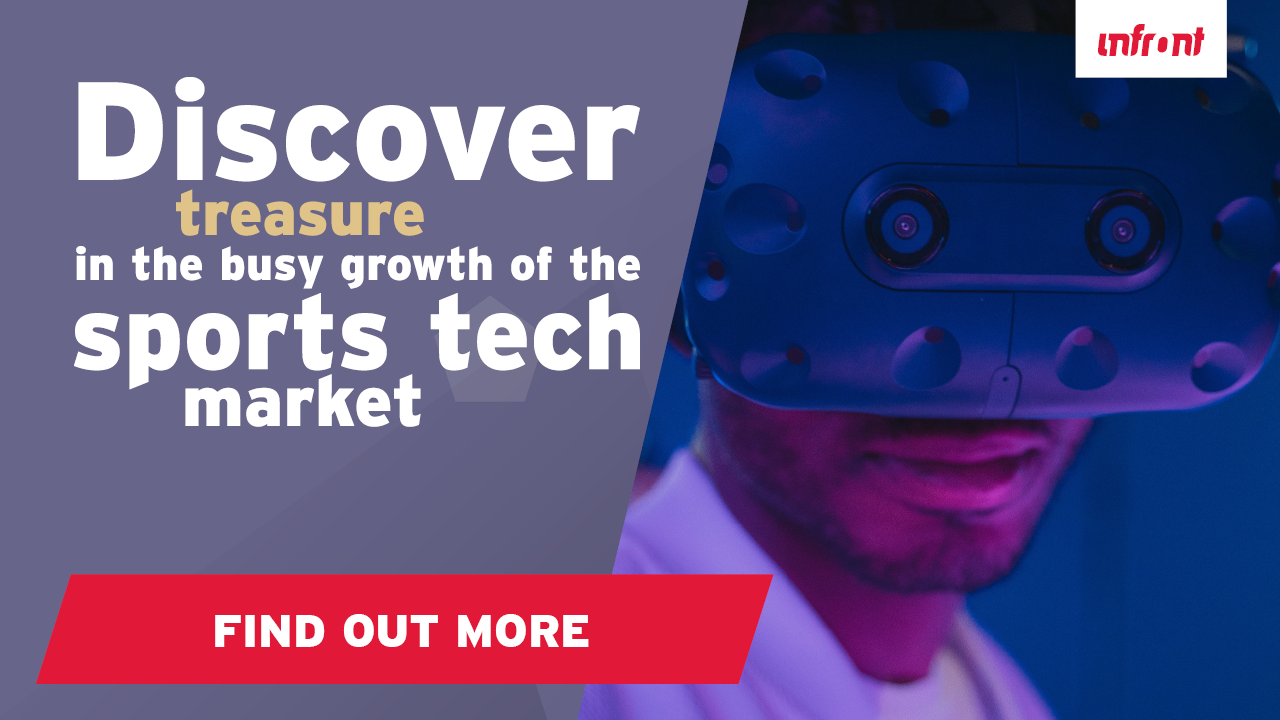Small team, impactful innovation: Q&A with Minute.ly’s VP Product Management

How sports content automation adds value for rightsholder
Behind the scenes: Using production to bring the ACEA Run Rome The Marathon 2024 to life
The invisible performance: How broadcast production shapes the sport we see
Content champions: how sports organisations can captivate fans
How tech is unlocking new revenue streams and reshaping the sports marketing industry
I recently caught up with Sagy Bar, VP Product Management at Minute.ly, a start-up that Infront took a stake in 2019. Sagy began his career as a software developer working for Mercury Interactive (later acquired by HP), before moving to business-facing positions and eventually joining the bustling Israeli startup scene.

Minute.ly automatically identifies the most captivating moments of video content, which can be used to capture viewer attention, navigate viewers towards video content and increase consumption. Content is automatically adapted to fit any platform, medium or technological frameworks that exist.
Q: As a startup Minute.ly is still a small company, but you’ve had quite a few successes when it comes to innovation. Does Minute.ly have an instated innovation process?
There is no single owner for innovation at Minute.ly. We all believe that anyone and everyone can equally contribute when it comes to good ideas. So from a product perspective [we] drive the product agenda, but we definitely invite everyone, including our customers, to come up with ideas that could eventually become valuable innovation.
In larger companies, for example, when I used to work for Mercury and HP, we had a specific position/person that was responsible for innovation. Obviously not to come up with all the ideas by themselves, but to drive innovation as a strategic agenda. At Minute.ly we are a much smaller company, and so our communication is much less formal. Most of us are based in Tel Aviv, so in terms of the culture it is much easier to throw out an idea, examine it and develop it. In most cases it will probably end up in the recycling bin but sometimes we end up with good outcomes.
Q: As someone who has worked for the bigger companies, or ‘giants’ as you referred to them, as well as startups, what differences do you see in the ways large companies innovate versus smaller ones?
If I had to pick just one, I would say agility is probably the most noticeable difference between the ‘giants’ or other enterprise companies and small startups. Which is a huge advantage or disadvantage depending on how you look at it.
In general, the “try fast, fail fast” paradigm is very important and basic in a startup environment. This is evident by the high number of ideas, products and companies that have been started and consequently failed. I guess risk and agility are two sides of the same coin. If you are not financially secure, then that risk can bring an end to your venture.
On the other hand enterprises leverage their experience to build well-defined innovation processes, which is also a very valuable and powerful tool. If I had to choose between the two then I would obviously go with agility. However, you should not underestimate processes and experience.
Q: What does Minute.ly do to foster innovation within the company?
So far we don’t have specific processes to foster innovation for a few reasons; we are spread quite wide and thin, so the amount of backlog and commitments that we have to our customers, prospects and the market is huge.
Obviously when we consume the backlog we often come across innovation ideas and approaches. Not necessarily products, but when you deal with hi-technology and AI, the opportunities you get to innovate are endless. The second reason is that we have very strong scientists in the fields of AI, data and software development. That, in combination with an Israeli attitude results in tons of innovation on very different levels.
So currently, innovating comes naturally to the team. But once we grow, and if and when it changes, then we will definitely devote some attention to innovation as a process.
 The Minute.ly team at their office in Tel Aviv
The Minute.ly team at their office in Tel Aviv
Q: What do you believe are the most significant innovations Minute.ly’s made recently?
We have something we call Minute Magnets. A Minute Magnet shows our basic product offering, which is the ability to identify and generate a compilation “summary” of the most engaging moments out of a source video content.
The most significant innovation that we have delivered over the past couple of years is the fully AI-based and automated generation of our Minute Magnets. Meaning that regardless of the source video, the category, or the domain, our AI is able to understand the content and the theme or narrative, and develop a corresponding Minute Magnet, which can be from a few seconds up to 20 or 30 seconds long.
Today this happens completely automatically. If you wish, there is always a way for a human to override or alter the result. But we understood pretty quickly that in order for our products to offer real value, we need to be able to scale, and in order to do that we need to completely rely on our AI to generate the Minute Magnets. So that’s our most significant innovation.
When you consider the different platforms and devices out there, we are also able to offer Minute Magnets in any aspect ratio, irrespective of the source video. This is another huge leap that we made in regards to source content and the resulting Minute Magnet. We can receive a source video that has a horizontal aspect ratio and transform it into a vertical one.
Q: You are in an industry that is constantly changing, how do you see your technology developing within this ever-changing market?
We have a few dimensions that we see evolve on a regular basis and we have interest in, in terms of improving and expanding our product offering.
We already talked about content, and our technology is learning as we go. The more content we throw at it the more the AI learns. But there are still fields and content categories in which we haven’t yet reached a level we aspire to. So one dimension is definitely to cover more content categories. We are currently interested in and have already made initial steps in the areas of gaming and eSports, obviously with some added pressure due to Coronavirus. So content development and content evolution is one aspect we’re looking at.
Another aspect is the different devices and platforms that video is used for. Consider smart devices, IOT, smart TVs, social platforms continue to advance and develop. For example with gaming - we’re coming across more and more social gaming platforms. Our core value is to help our customers get more out of their video content. Distribution to target devices and platforms is part of that value add. From our end, we’re not only looking at web and mobile technology, we’re looking for more and more platforms and devices where video can be consumed.
The last one is pretty futuristic. We would like to get to the level that our AI is not only capable of understanding any video content that you throw at it, but to be able to synthesise video content based on that video intelligence. It’s still in early days and it’s a very audacious goal, but it’s a good one to aspire to.
Q: Earlier you mentioned that clients approach you with ideas. How often do you receive ideas from your clients and what is the most innovative idea they’ve had?
All the time. The most innovative and valuable? One of our customers, a sports publisher, came up with the idea of generating a social story, in-game - while the event is happening. So you can actually hook up to the video stream or source coming from the live feed, identify the relevant highlights and build a social story that tells the narrative of the sporting event.
So it is in a traditional social story form, vertical and mobile-first. You can interact with it the same way you interact with any social story, and it’s better adapted to the way certain viewer groups expect to consume content.
That was a very focused, intensive effort that we had to deliver in a very limited time frame, as it was already midseason. Eventually it was a huge success that we were then able to replicate for additional customers, additional sports, etc.
Q: Covid-19 forced many companies to change tactics and innovate. What steps did Minute.ly take to continue innovating during these past few months?
We aimed to preserve the same atmosphere that we have in the office, even while remote. This primarily was done through maintaining open and clear communication. As mentioned earlier, we try to constantly be aware and identify opportunities as they arise, use critical thinking to reflect on them and then act and execute accordingly.
Q: Is there any advice you have for new startups for innovation or tips for generating an innovative atmosphere within a small company?
I am not sure that there is a specific “secret sauce” for generating innovation. In general, we would recommend what has worked for us: it’s important to keep your sensors open for different opportunities that arise and make sure you map and understand your target market well. After that, communication is key, as well as critical thinking on each opportunity that comes up.
Infront Lab
Infront Lab uses AI-based tools to empower content creators, digital publishers and media companies to optimise on their reach, engagement, monitoring and monetisation of their assets.





/Images-Logos/09092025_IIHF%20case%20study%20blog.jpg)
.png)
